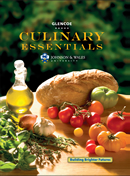
Culinary Essentials ©2010Chapter 27: Yeast Breads and RollsCheck Your Answers: After You ReadSection 27.1Review Key Concepts1. A starter is a mixture of flour, yeast, and a warm liquid. It begins the leavening action.2. Pullman bread and dinner rolls, such as cloverleaf and Parker House rolls, can be made from soft medium dough. 3. A freshly baked croissant should be light golden brown. It should have a flaky, layered texture and an open grain or crumb. Practice Culinary Academics4. Science Students should observe that the balloon expands as the carbon dioxide is released by the yeast and fills the balloon. Students should record these observations in their log and support their conclusion.5. Mathematics Christine must sell at least 39 croissants during the day to cover her product cost. Christine's expenses will equal 80 × $0.60 = $48 regardless of how many croissants are sold (since all 80 croissants will have already been baked). If x represents the number of croissants sold, then Christine will break even at $1.25(x) = $48, or x = $48 ÷ $1.25 = 38.4 croissants sold. Thus, if she sells 39 croissants, she will cover her ingredient cost. Section 27.2Review Key Concepts1. The straight-dough method calls for mixing all ingredients together in a single step either by hand or with a bench mixer.2. The stages in mixing and kneading are: pickup (ingredients are added to the mixer); cleanup (ingredients come together in a ball); development (oxygen is incorporated and gluten is developed); and final clear (verify gluten formation and remove dough from mixer). 3. The factors that determine oven temperature and baking time are dough type, dough richness, portion size, desired color, and weather/altitude. 4. Let the bread cool before wrapping. Then, wrap tightly in a moisture-proof wrapping and store in the freezer to prevent staling. Practice Culinary Academics5. Mathematics The first baguette is 55 × 10 = 550 mm, while the second is 61 × 10 = 610 mm. The first baguette is 55 ÷ 100 = 0.55 m, while the second is 61 ÷ 100 = 0.61 m. The first baguette is 0.55 ÷ 1,000 = 0.00055 km, while the second is 0.61 ÷ 1,000 = 0.00061 km. |  |















